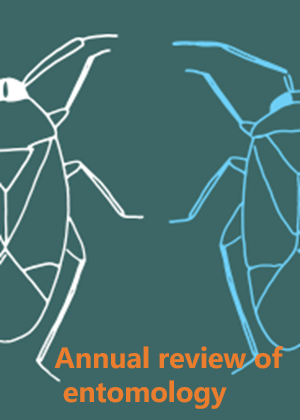人类世昆虫数量减少。
IF 15
1区 农林科学
Q1 ENTOMOLOGY
引用次数: 596
摘要
据报道,全世界的飞禽、陆禽和水生昆虫数量都在减少。大多数报告来自西欧和北欧,那里的昆虫动物群研究得很好,并且有许多分类学上不同谱系的大量人口统计数据。在亚洲、北美、北极、新热带和其他地方也发现了其他动物灭绝的案例。虽然这篇综述讨论了物种损失和种群下降,但它的重点是后者。丰富物种的减少尤其令人担忧,因为它们锚定了营养相互作用,并承担了各自社区的许多基本生态系统服务。审查被认为对观察到的坍塌负责的因素以及那些被认为对昆虫特别有威胁的因素构成了这种治疗的核心。除了生境破坏、农业集约化(包括农药使用)、气候变化和入侵物种等广泛认识到的对昆虫生物多样性的威胁外,本评估还强调了一些不太常被考虑的因素,如燃烧化石燃料造成的大气硝化作用以及干旱和降水模式变化的影响。由于昆虫数量下降的地理范围和幅度在很大程度上是未知的,因此迫切需要进行监测工作,特别是跨生态梯度的监测工作,这将有助于确定昆虫数量下降的重要原因。这篇综述还考虑了脊椎动物食虫的现状、报道偏差、收集和解释昆虫统计数据所固有的挑战,以及昆虫丰度增加的情况。《昆虫学年鉴》第65卷的最终在线出版日期预计为2020年1月7日。修订后的估计数请参阅http://www.annualreviews.org/page/journal/pubdates。本文章由计算机程序翻译,如有差异,请以英文原文为准。
Insect Declines in the Anthropocene.
Insect declines are being reported worldwide for flying, ground, and aquatic lineages. Most reports come from western and northern Europe, where the insect fauna is well-studied and there are considerable demographic data for many taxonomically disparate lineages. Additional cases of faunal losses have been noted from Asia, North America, the Arctic, the Neotropics, and elsewhere. While this review addresses both species loss and population declines, its emphasis is on the latter. Declines of abundant species can be especially worrisome, given that they anchor trophic interactions and shoulder many of essential ecosystem services of their respective communities. A review of the factors believed to be responsible for observed collapses and those perceived to be especially threatening to insects form the core of this treatment. In addition to widely recognized threats to insect biodiversity, e.g., habitat destruction, agricultural intensification (including pesticide use), climate change, and invasive species, this assessment highlights a few less commonly considered factors such as atmospheric nitrification from the burning of fossil fuels and the effects of droughts and changing precipitation patterns. Because the geographic extent and magnitude of insect declines are largely unknown, there is an urgent need for monitoring efforts, especially across ecological gradients, which will help to identify important causal factors in declines. This review also considers the status of vertebrate insectivores, reporting bias, challenges inherent in collecting and interpreting insect demographic data, and cases of increasing insect abundance. Expected final online publication date for the Annual Review of Entomology, Volume 65 is January 7, 2020. Please see http://www.annualreviews.org/page/journal/pubdates for revised estimates.
求助全文
通过发布文献求助,成功后即可免费获取论文全文。
去求助
来源期刊

Annual review of entomology
生物-昆虫学
CiteScore
45.70
自引率
0.80%
发文量
46
期刊介绍:
The Annual Review of Entomology, a publication dating back to 1956, offers comprehensive reviews of significant developments in the field of entomology.The scope of coverage spans various areas, including:biochemistry and physiology, morphology and development, behavior and neuroscience, ecology, agricultural entomology and pest management, biological control, forest entomology, acarines and other arthropods, medical and veterinary entomology, pathology, vectors of plant disease, genetics, genomics, and systematics, evolution, and biogeography.
 求助内容:
求助内容: 应助结果提醒方式:
应助结果提醒方式:


